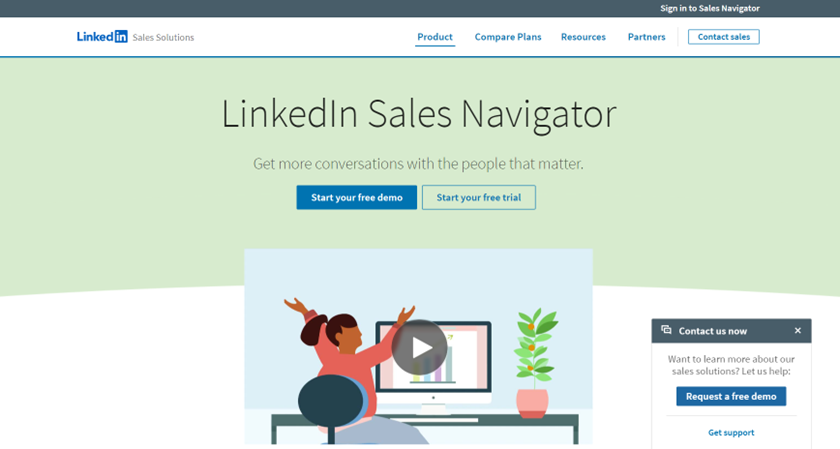Introduction
Imagine a never-ending stream of qualified leads, eager to learn about your product or service. That’s the power of effective lead generation. It’s the cornerstone of any thriving business, the fuel that ignites your sales engine.
Lead generation, in essence, is the art of attracting potential customers and capturing their interest. It’s about transforming strangers into informed prospects, ready to take the next step. This continuous process can be broken down into two main approaches: inbound and outbound.
Inbound strategies involve creating valuable content, like blog posts, newsletters, or informative guides, that organically draw prospects toward your brand. Outbound methods, on the other hand, involve actively reaching out to potential customers – think targeted emails or direct mail campaigns.
But what if you could supercharge both inbound and outbound efforts? That’s where lead generation software comes in. These innovative tools empower your business to generate leads through a variety of channels, from captivating ads and landing pages to interactive chatbots and informative webinars.
Fascinated? Buckle up! Delve into the key aspects you need to consider when choosing the perfect lead-generation software for your business.
>>> MORE: Monday Sales CRM by Monday.com Review
1. Understand Your Needs
To choose lead generation software, assess your requirements. This introspection guides you toward the perfect tool and maximizes your return on investment. Here’s what to consider:
Define your lead generation goals. Are you aiming to increase website sign-ups, attract webinar attendees, or generate direct sales inquiries? Aligning your software with these specific objectives ensures it delivers the features you need.
Understanding your ideal customer profile (ICP) is crucial. Who are you trying to attract? Business-to-Business (B2B) or Business-to-Consumer (B2C) clients? Targeting small businesses or large enterprises? Tailoring your approach to your ICP will significantly impact the channels and software functionalities you prioritize.
Consider the lead generation channels you’ll leverage. Social media, email marketing, and content marketing are all popular options. For instance, if B2B clients are your target audience, LinkedIn might be a critical channel. In this scenario, tools like LinkedIn Sales Navigator can be invaluable assets, allowing you to target decision-makers within your specific industry.

Decide on the type of content you’ll create to attract and nurture leads. Blogs, informative ebooks, or engaging webinars are all effective options. The type of content you choose will also influence your software selection. For example, suppose you plan on offering gated content (e.g., downloadable ebooks) to capture leads. In that case, tools like HubSpot offer user-friendly landing page builders and lead capture forms to streamline the process.
2. Ease of Use
To select lead generation software, consider its user-friendliness. Even the most powerful lead generation software becomes a burden if it requires a team of tech wizards to operate. User-friendliness should be a top priority. Look for software that boasts an intuitive interface, allowing marketers to navigate its features with ease, even without extensive technical knowledge.
A seamless user experience empowers your marketing team to focus on strategy and execution, not wrestling with complex software.
By prioritizing user-friendliness, you ensure your team can leverage the software’s full potential and drive successful lead-generation efforts.
3. Integration Capabilities
To opt for lead generation software, evaluate its integration capabilities. In today’s data-driven landscape, ensuring your lead generation software integrates seamlessly with your existing Customer Relationship Management (CRM) system is paramount. This integration creates a unified ecosystem, fostering a smooth flow of information between your lead generation efforts and your customer lifecycle management.
When evaluating lead generation software, prioritize tools that offer native integrations with popular CRM solutions like Salesforce or Zoho CRM. This ensures data captured through your lead generation efforts automatically populates your CRM, eliminating the need for manual data entry and reducing the risk of errors.
For example, if your business already utilizes Salesforce as your CRM platform, consider lead generation tools specifically designed to integrate seamlessly with it. This streamlined approach fosters better data visibility and empowers your sales team to nurture leads more effectively. By prioritizing CRM integration, you create a powerful synergy that optimizes your lead-generation efforts and fuels sales success.
4. Analytics and Reporting
To decide on lead generation software, evaluate its analytics and reporting features. In the ever-evolving world of marketing, data is king. When selecting lead generation software, prioritize tools that offer robust analytics and reporting functionalities. This empowers you to track the performance of your lead generation efforts, measure conversion rates, and gain valuable insights to optimize your campaigns.
Look for software that provides comprehensive conversion tracking capabilities. This allows you to monitor how many website visitors convert into leads, identify the most effective lead sources, and track the progress of leads through your sales funnel. With this data at your fingertips, you can make informed decisions to refine your lead generation strategy and maximize your return on investment.
For example, Google Analytics is a powerful tool that provides valuable insights into website traffic and lead sources. By integrating your lead generation software with Google Analytics, you gain a holistic view of your marketing funnel, allowing you to identify areas for improvement and optimize your lead generation efforts for greater success.
>>> PRO TIPS: How to Make Money With Sales Funnels
5. Scalability
To select lead generation software, consider its scalability. As your business thrives, you’ll inevitably see a surge in leads. To ensure your software can handle this growth, prioritize scalability during selection. Look for software offering flexible plans that adapt alongside your business.
Many providers offer tiered structures, allowing you to access advanced features and increased lead capacity as your needs evolve. By prioritizing scalability, you invest in software that empowers you to achieve long-term success.
6. Research and Compare
To decide on lead generation software, empower your decision with thorough research. Explore user reviews on platforms like Capterra, G2, or TrustRadius to glean insights from real users.
Once you’ve shortlisted a few options, create a comparison chart to evaluate features, pricing, and user experiences side-by-side. Leverage software review websites that offer in-depth comparisons to streamline your research and identify the perfect fit for your needs.
7. Evaluate Features
To assess lead generation software, examine its features. Understanding your needs is crucial, but so is the software’s functionality. Here are some key features to consider:
- Organic Lead Capture: Turn your website into a lead magnet with landing page builders and lead capture forms.
- Paid Advertising: Reach a wider audience with software that integrates with ad platforms and offers features like keyword research and campaign optimization.
- Chatbots: Engage website visitors in real time with user-friendly chatbot builders.
- Webinars & Events: Host informative webinars and capture leads with software offering registration tools and lead capture features.
- Email Marketing: Nurture leads with targeted email campaigns and track performance with email marketing tools.
8. Trial Periods and Demos
To commit to any lead generation software, take advantage of the trial periods and demos many vendors offer. This hands-on experience allows you to explore the software’s functionality firsthand, assess its user-friendliness, and determine if it aligns with your needs.
By leveraging trial periods and demos, you can make an informed decision with confidence, ensuring you select the perfect software to fuel your lead generation success.
9. Budget Considerations
To choose lead generation software, take into account budget considerations. The cost of lead generation software can vary depending on the features offered and the size of your business. Here’s what to consider when evaluating pricing models:
Lead generation software comes in different payment flavors. Monthly subscriptions are popular, with costs based on features and users. Per-user fees work for small teams but can get pricey as you scale. Explore tiered plans with varying features and prices to optimize your budget and functionality.
Carefully examine the pricing model of each shortlisted software option. Consider factors like your budget, team size, and the features you require.
>>> GET SMARTER: Mailchimp Lead Management Review
10. Choose Wisely
To pick lead generation software, make a wise decision, With a solid understanding of your needs and the software’s functionalities, you’re ready to select the perfect tools.
Craft Your Software Stack: Don’t be afraid to mix and match! Build a customized stack with best-in-breed tools that address your specific needs. Unbounce for landing pages, Ahrefs for SEO, HubSpot for email marketing – the possibilities are endless.
Embrace Continuous Improvement: Technology is ever-evolving. Revisit your choices periodically to ensure your lead generation software remains aligned with your needs and leverages the latest advancements.
Recap
In choosing lead generation software, understand your business’s needs, including your goals, target audience, and preferred channels. Consider factors like ease of use, integration with your CRM, analytics capabilities, and scalability. Research and compare options, evaluating features such as organic lead capture, paid advertising, chatbots, webinars, and email marketing.
Take advantage of trial periods and demos to make an informed decision based on your budget and specific requirements. Ultimately, craft your software stack wisely, embracing continuous improvement to ensure ongoing success in generating qualified leads for your business.













